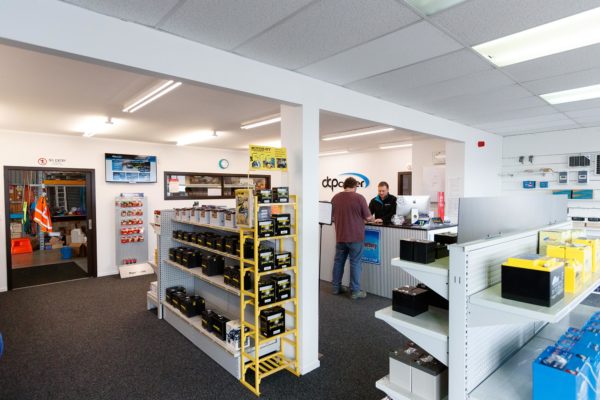A quick word on quality:
At DCPower, we only deal in quality products. Everything we sell must pass our own in-house testing, to ensure that we are satisfied you’re buying a product that will go the distance.
What is CCA?
CCA stands for Cold Cranking Amps. This is a measure of the starting performance of a battery. The rating is based on the number of amps that a battery can supply for 30 seconds at -18ºC while maintaining a voltage of 1.2V per cell. The higher the rating, the greater the starting capacity of the battery.
What is RC?
RC stands for Reserve Capacity. This rating determines how many minutes a fully charged battery can deliver a constant current of 25 amps at 27ºC without falling below a voltage of 1.75 volts per cell.
What is the difference between a Starting battery and a Deep Cycle battery?
A Starting battery is designed to provide a high spike of current, for a short period of time – such as is required to start an engine. In this situation, the small amount of energy taken from the battery is immediately replaced by the alternator.
A Deep Cycle battery is designed to provide a constant current over a long period of time. Deep Cycle batteries can be discharged and recharged over and over again without causing damage to the battery.
Is my lead acid battery bad for the environment?
Contrary to popular belief, approximately 98% of a lead acid battery is recyclable – although there are no longer any battery recycling facilities located within New Zealand. Used batteries are sent off-shore.
The lead, plastic and chemical components are all recycled or repurposed: sulfuric acid is converted to sodium sulfate, lead is melted down and reused, and the polypropylene (battery shell) is recycled.
At DCPower, we support Arohanui Hospice with our battery recycling program. The proceeds of any automotive batteries that we collect are donated to this wonderful cause.
What is a calcium battery?
Calcium is an additive to the electrolyte, which increases the cranking capacity of a battery and allows it to be ‘maintenance free’. Most automotive batteries on the market these days have some form of calcium additive.
Can I order over the phone?
Yes. There will be a credit card surcharge for this method. Call us during business hours on (06) 359 0834 or send us a message.
What do I do if I am experiencing issues or if I suspect my battery is faulty?
In the first instance, please make sure your battery is fully charged. We see a lot of flat batteries which are incorrectly thought to be faulty. Flat batteries are NOT covered by warranty.
If your purchase is faulty, we will absolutely honour our obligations under the Consumer Guarantee’s Act. The first step of this process is that you must notify us within 7 days of the issue occurring. Please include your name, date of purchase, product part number and a summary of the problem. You can do this by clicking here.
What do I do if I order the wrong battery?
Unfortunately we are unable to alter your order once it is placed. However we will happily exchange your item (or give you a store credit) within 14 days of purchase.
Please be aware that return freight is at your cost. We suggest you use a tracked shipping method as the item is your responsibility during return transit.
How do I know which battery I need?
Not all batteries are created equal. Please read the item descriptions carefully to ensure you are selecting the right battery.
If you are replacing an existing battery, we recommend you double check the physical dimensions and terminal placements against the battery you are ordering. Whilst we have access to some very comprehensive lists of manufacturer recommendations, these are not foolproof.
If in doubt, please contact us for further assistance.
How can I tell if my battery is fully charged?
A fully charged 12V battery will read 12.6V or greater when measured open circuit (no load). A fully charged 6V battery will read 6.3V or greater. A fully charged 2V cell will read 2.1V or greater.
Voltage readings can be taken on any lead acid battery with a digital multimeter. Voltage readings on wet cells can also be taken with a hydrometer, although this does require safety precautions.
Be aware that in some situations it is possible to get false voltage readings.




